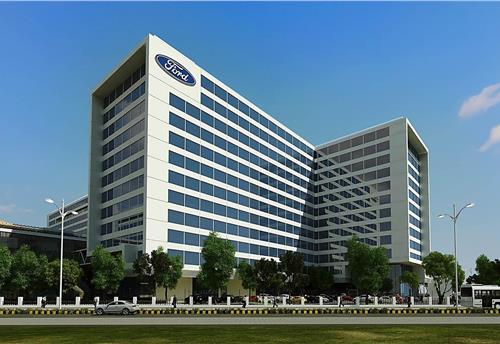Advanced driver assist systems not a distant reality in India
On the sidelines of the NASSCOM Summit in Pune held on October 9, 2014, which followed a theme of internet of things for this year’s edition
On the sidelines of the NASSCOM Summit in Pune held on October 9, 2014, which followed a theme of internet of things for this year’s edition, Autocar Professional’s associate editor Sumantra B Barooah moderated a session on the possibilities of having features like advanced driver assist systems in the cars sold in India.
With a member each representing an OEM, a top-notch supplier and a consulting firm, the session was panelled by Sirish Batchu, head, infotronics technology and advanced electronics, automotive and farm sectors, Mahindra Research Valley, Mahindra & Mahindra; Sri Krishnan V, vice-president, engineering unit – safety, car multimedia, base software, method and tools, Robert Bosch Engineering & Business Solutions and Ian Riches, director, global automotive practice, Strategy Analytics.
The session focussed on the timeline by when driverless cars can be a reality in India. Giving an interesting point of view, Strategy Analytics’ Riches said, “Driverless cars becoming a reality can be seen from two sides – evolution and revolution. As an evolution, such a development represents evolution of the advanced driver assist mechanisms and a number of OEMs and vendors are working in this area. However, on the revolution side, company like Google, which has nothing to do with the automotive world and its applications, have developed a driverless car technology. They are not competing with the GMs, Fords or the Volkswagens of the world. They are trying to make them irrelevant.”
Strategy Analytics’ Riches emphasized on Google’s approach of beginning from a clean slate without following any of the conventional practices of developing a car. “I was attending a global automotive conference in the UK where some Indian engineers from Tata Motors were presenting a case study. A number of British engineers expressed surprise on the development practices as presented by the Indians. I realised that in the UK or other developed nations, the engineers follow a conventional path of making vehicles whereas in India, the thinking is slightly different,” he added.
Giving his perspective on this topic, Robert Bosch Engineering’s Sri Krishnan, on a lighter note, said, “Autonomous driving is very much possible in India currently. You can hire a driver, pay him US$200 (Rs 12,000) for a month and you have a car being driven for you automatically.” However, he believes that advanced features such as emergency braking and others will not take as long as 10 years to come into the cars in India.
Batchu of M&M stressed on the costs side of the technology. “How to bring the costs down is a fundamental challenge for the OEMs. We do not follow adapt-for-India approach, but follow make-for-India approach. While costs are the key driving factor, one party alone cannot make the difference. At M&M, we have always encouraged innovation and Mahindra Rise Innovation Awards are a step towards that direction. All OEMs are working towards these features (advanced driver assist systems). Mahindra e2O is one such example which showcases our work in electronics.”
To a query on the need for cultivating a sense of opting for safety related technologies (consumers would pay for alloy wheels but not for ABS), Krishnan said, “The willingness to pay for safety is poor in India.”
Riches, however, had a different point of view. “Even in Europe, consumers would pay for alloy wheels over having an ABS system in their cars, if given a choice. Safety being an optional feature has a very low penetration in Europe. It has to be fitted as a standard feature. Hence government legislation is a must. That is the only way for having a 100 percent penetration for the safety related devices and technologies within our cars.”
M&M’s stop-start tech, which gave a direct benefit to its customers, was an instant hit among the buyers in India.
Robert Bosch Engineering’s Sri Krishnan added that “We have developed an engine management system for the Tata Nano and also for Ferrari cars. However, with the Nano, we had to have the cost factor in our minds. We must focus on developing simple solutions rather than the complex solutions.”
Krishnan believes that technologies such as parking related assist systems, applications based on the ultrasonic waves and mono video cameras (more affordable to develop) would throw in opportunities in India in the near future. “Autonomous braking, however, would take some time to come,” he added.
“I feel multi-camera vision could be another area of opportunity for the cars in India in the near future,” added Riches.
Photograph: Autocar Professional’s associate editor Sumantra B Barooah moderating a session on the possibilities of having features like advanced driver assist systems in the cars sold in India.
RELATED ARTICLES
Uniproducts India targets 15% growth till FY2027, eyes new EV OEMs for NVH parts
The Noida-headquartered company, which is a leading manufacturer of roof liners, floor carpets, sound insulation materia...
Ford to build more EV software capability at Chennai tech hub
Ford Business Solutions India, which currently employs 12,000 personnel set to add 3,000 more; Ford, which is known to b...
ASK Automotive to set up JV with Aisin to sell aftermarket parts for cars
Ask Automotive will have 51% of the equity of the joint venture to be set up with Aisin Asia (Thailand) Company and Aisi...





 10 Oct 2014
10 Oct 2014
 3732 Views
3732 Views





 Autocar Pro News Desk
Autocar Pro News Desk




